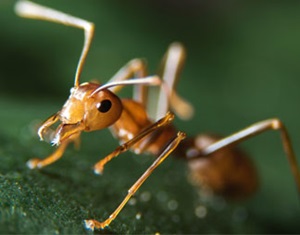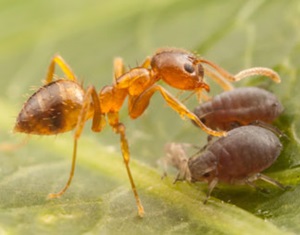The Keys to Effective Ant Control
Over half a century ago, some of my first memories in life were of watching ants trailing in my house. I would play with and observe the ants by wiping away the trail with my finger to see how long it took the ants to re-establish themselves, offer them different types of food to see what they preferred to eat, etc. Little did I know at the time that I would go on to study entomology in college and have a great career in research and development in the pest management industry.
As one who absolutely loves ants and ant management, I am often asked to help with ant problems. Ant management is not complex, but it’s not easy either. There are a number of steps that must be undertaken to successfully manage most ant populations. Follow these steps and you can stay ahead of the population instead of “fighting fires”.
To start, there are some IPM steps that can be taken which are universal, such as proper sanitation, inspection of goods entering a plant, constant inspections for incipient infestations, etc. but for the most part, the most effective control measures include properly chosen and applied baits which can be both species- and time-of-year specific.
In designing a successful program, proper identification of the pest species is the most important aspect of the whole management program. Different ant species can often look alike but have very different behaviors and life cycles. This is not just an academic step; it is critical in helping you design a successful management program.
There are many chemical controls that can be brought to bear against ant populations. Baits, including liquids, gels and solid formulations are probably among the most effective methods available, and can help actually kill the entire colony. A product toolbox that contains several high quality and varied baits is important.
Sprays can also be used, but should be used sparingly and with specific goals in mind. In most cases, sprays should be used to help prevent ant infestation into a building, rather than as a population control measure. It is important to choose a fast-acting spray to treat around potential entrance to buildings so the ants die before they get inside. Insecticide dusts are also effective when properly applied into voids that may provide a means of entry inside a structure.
Regardless of how effectively you apply dusts and sprays, successful ant management almost always relies on baits. Bait preferences differ from species to species and even with the same species between spring, summer and fall. Many ant species prefer carbohydrates, many prefer oils and others prefer protein food sources, so your choice of bait depends almost entirely on the species. In some instances, the food preferences shift during the year, so a bait that works well in the spring can be entirely ignored in the heat of the summer.
One case I worked on recently involved the PMP misidentifying crazy ants, (Nylanderia spp.) as red imported fire ants, (Solenopsis invicta). The PMP applied a soybean-oil-based ant bait to the infested grounds several times with no success. By the time I got involved and properly identified the pest, the infestation was enormous, the apartment managers were very annoyed and the PMP was almost broke. As it turns out, tawny crazy ants (Nylanderia spp.) almost completely ignore oil-based baits but instead prefer proteins early in the year and liquid carbohydrates in the summer. Once we instituted a bait-rotation pest management program, control became evident almost immediately. With visible ant reduction came happy apartment managers and a PMP who chalked up that experience to his training budget.

Red Imported Fire Ant

Crazy Ant/Nylanderia
Ants are wonderfully complex and social insects. Varied habits and life cycles require anyone who wants to manage them to be educated about their habits and use proper products against them. It truly is a case where it is best to “work smarter, not harder”.
Envu offers a full line of solutions for effective ant management.
